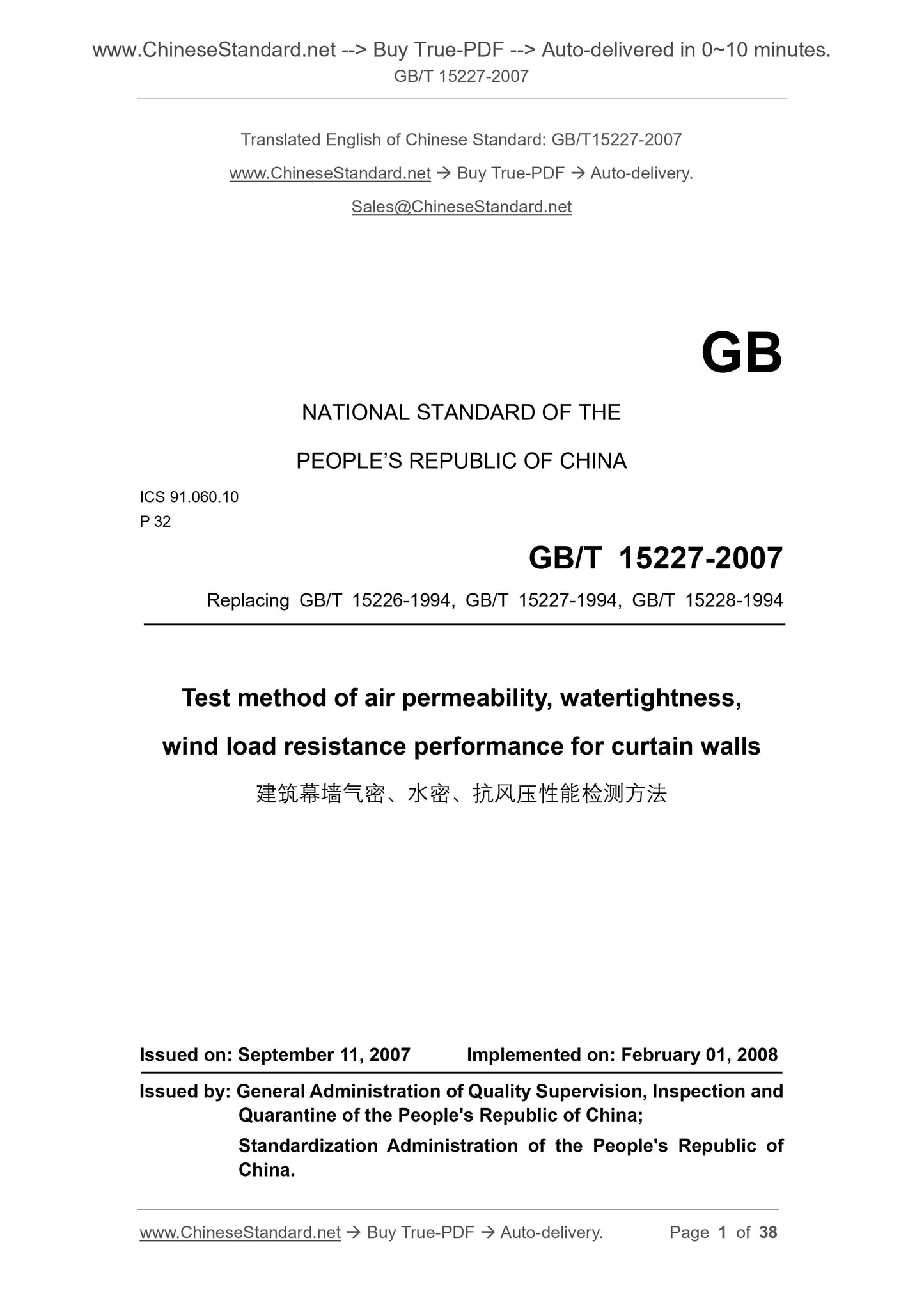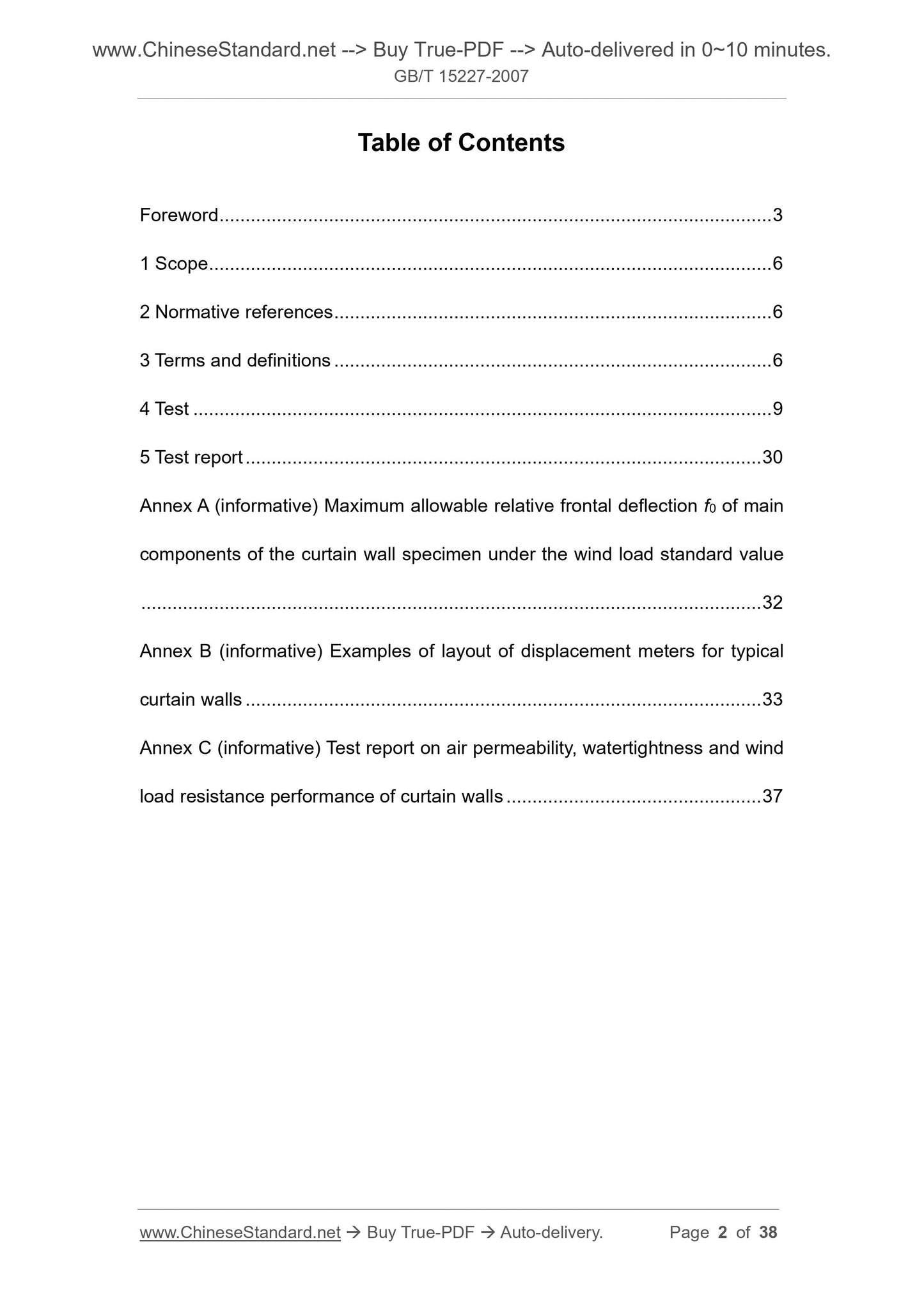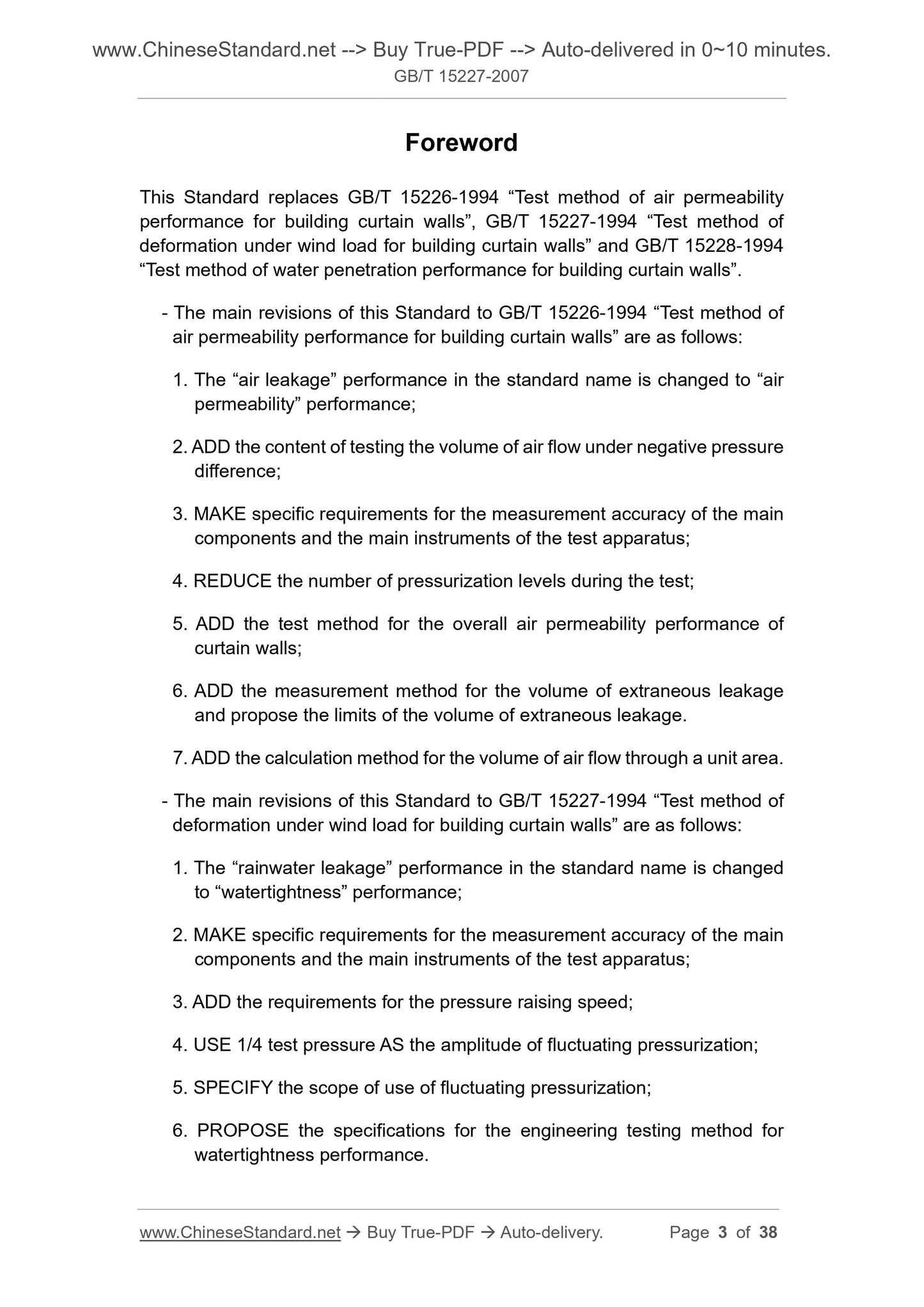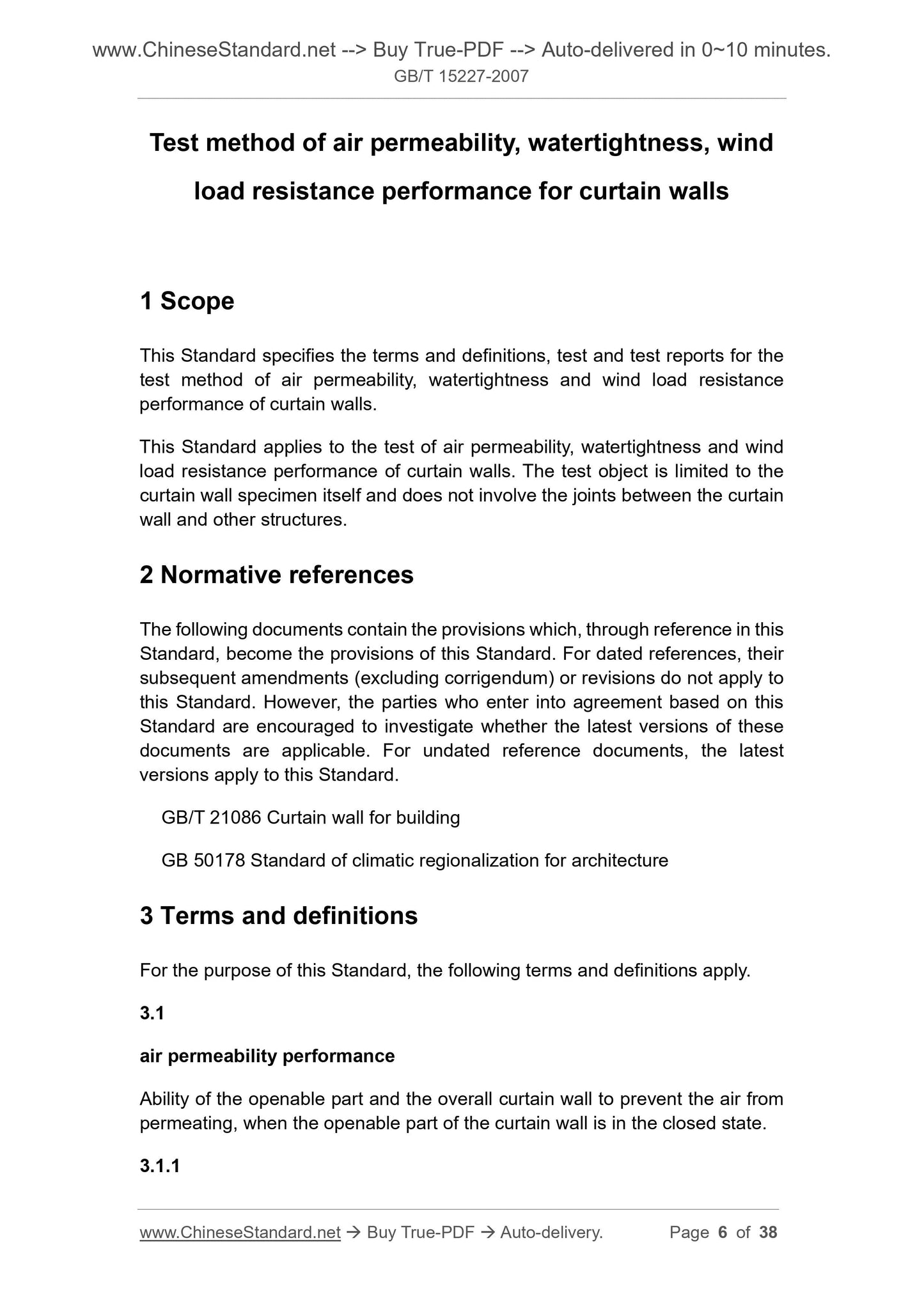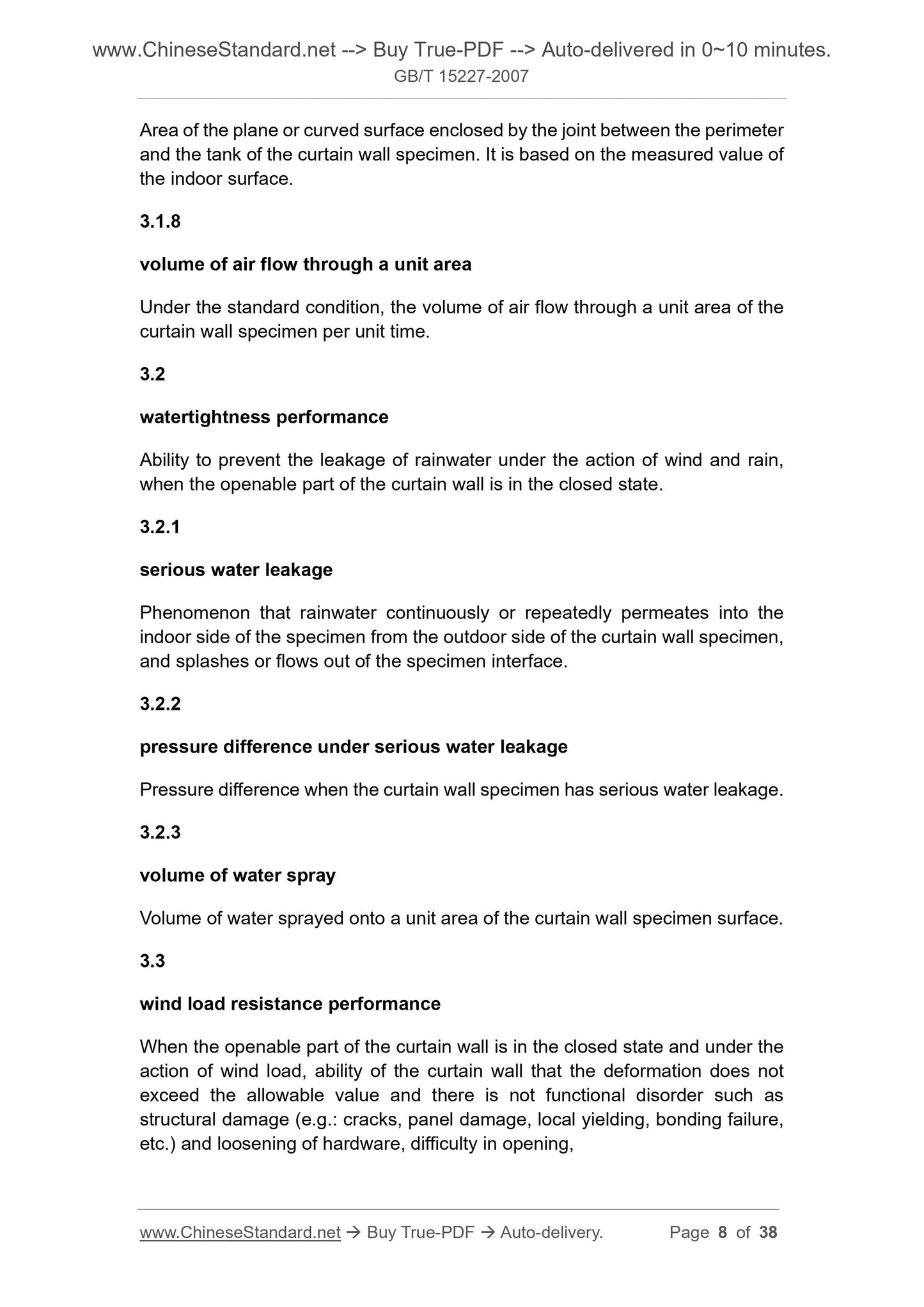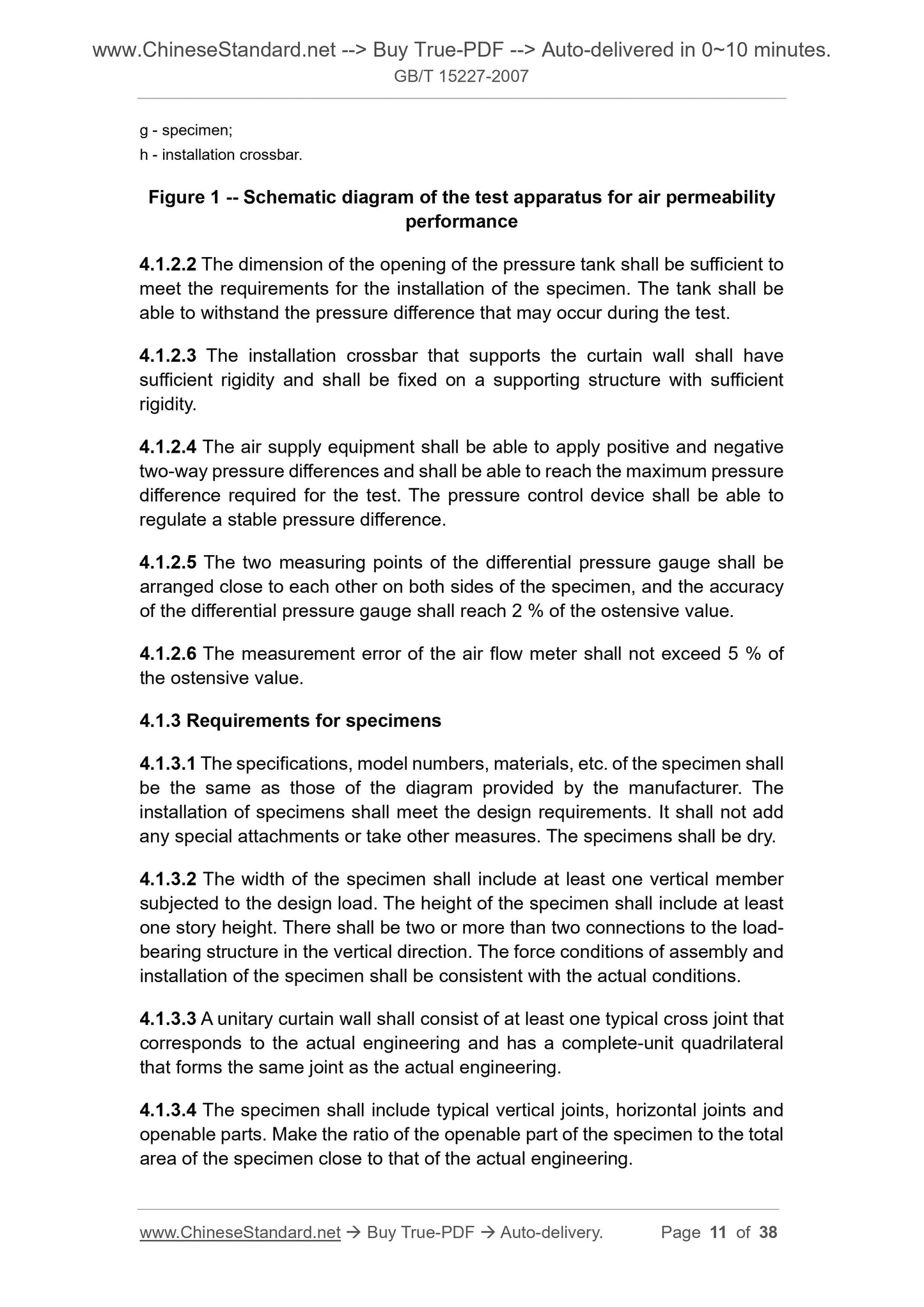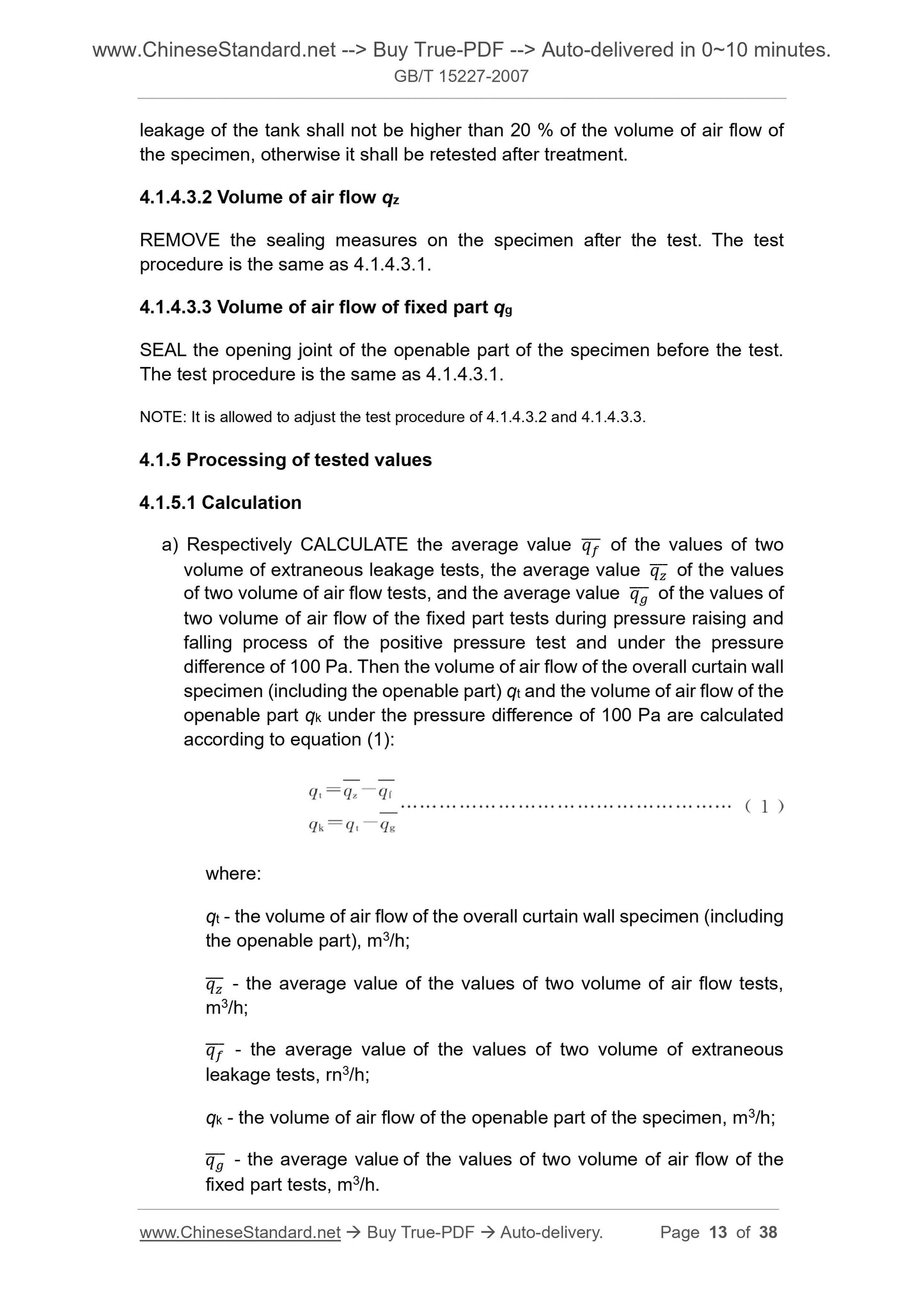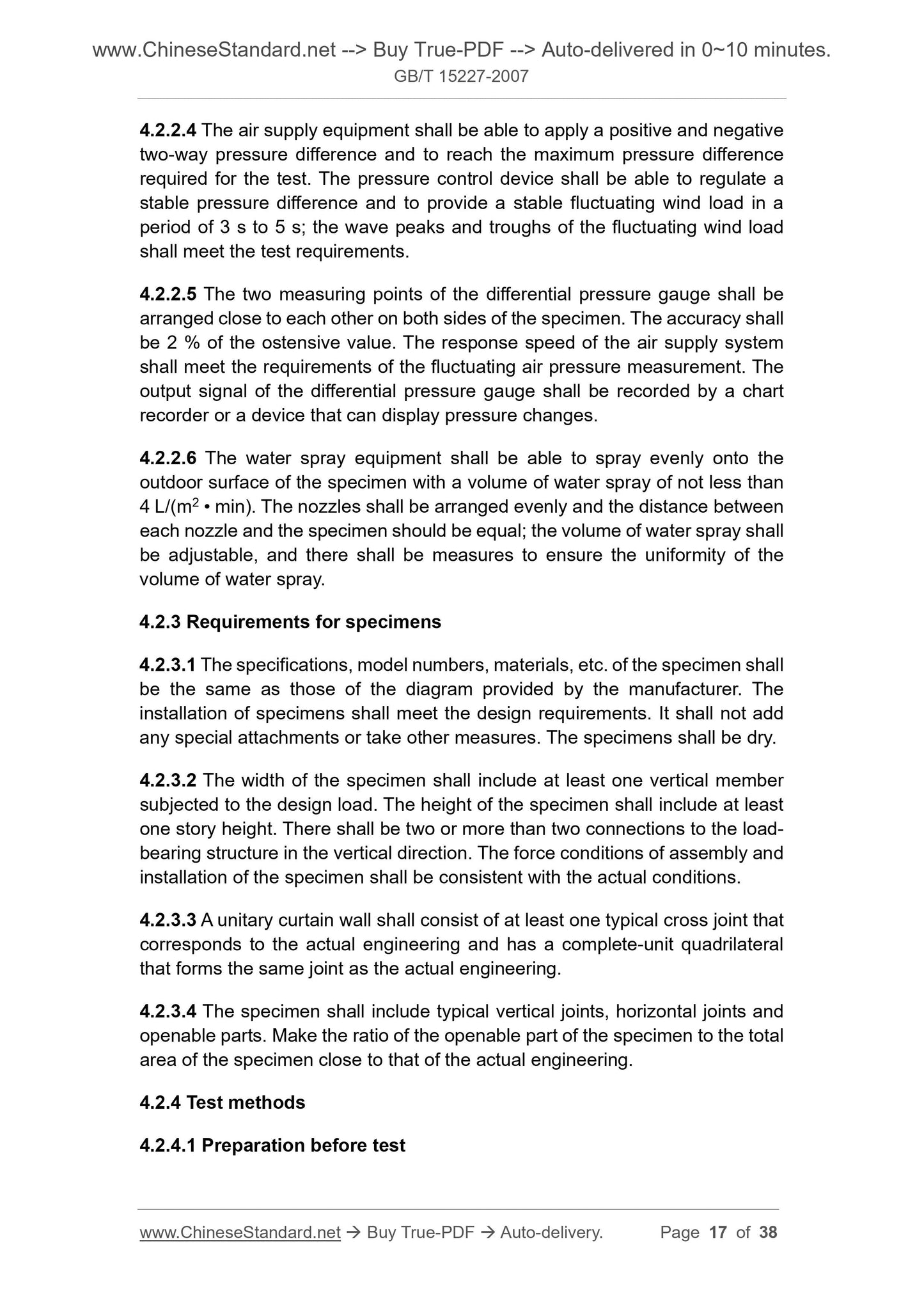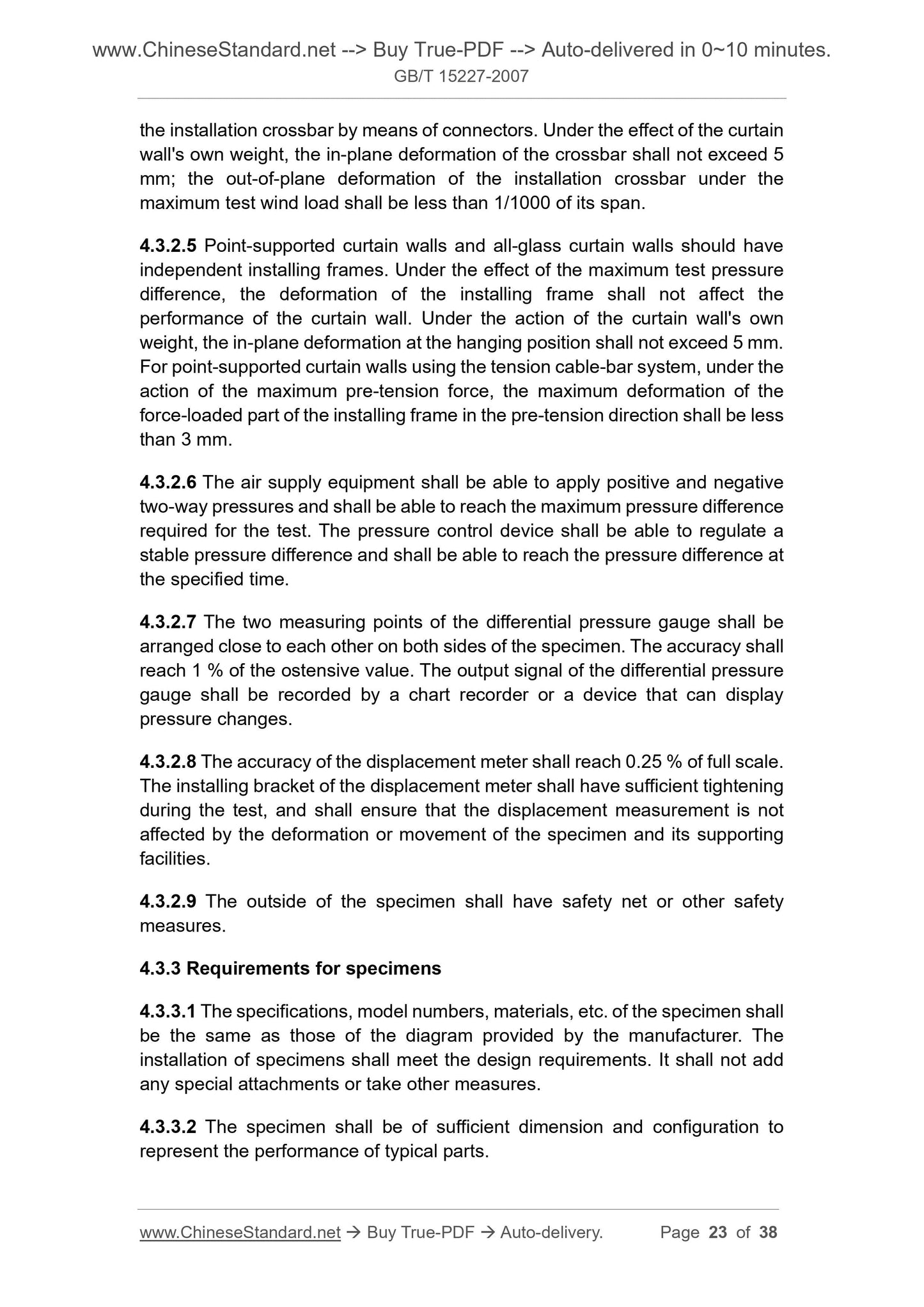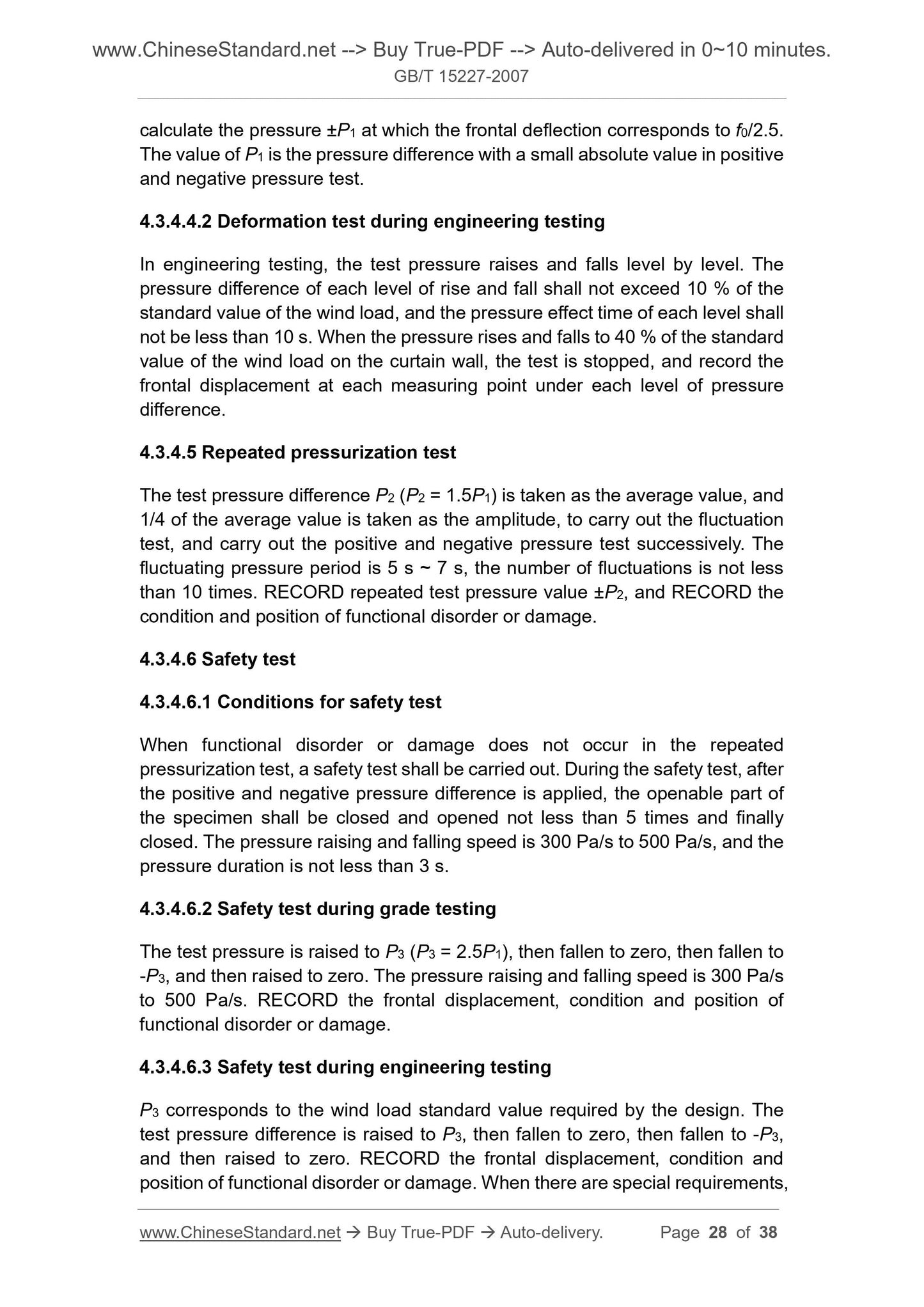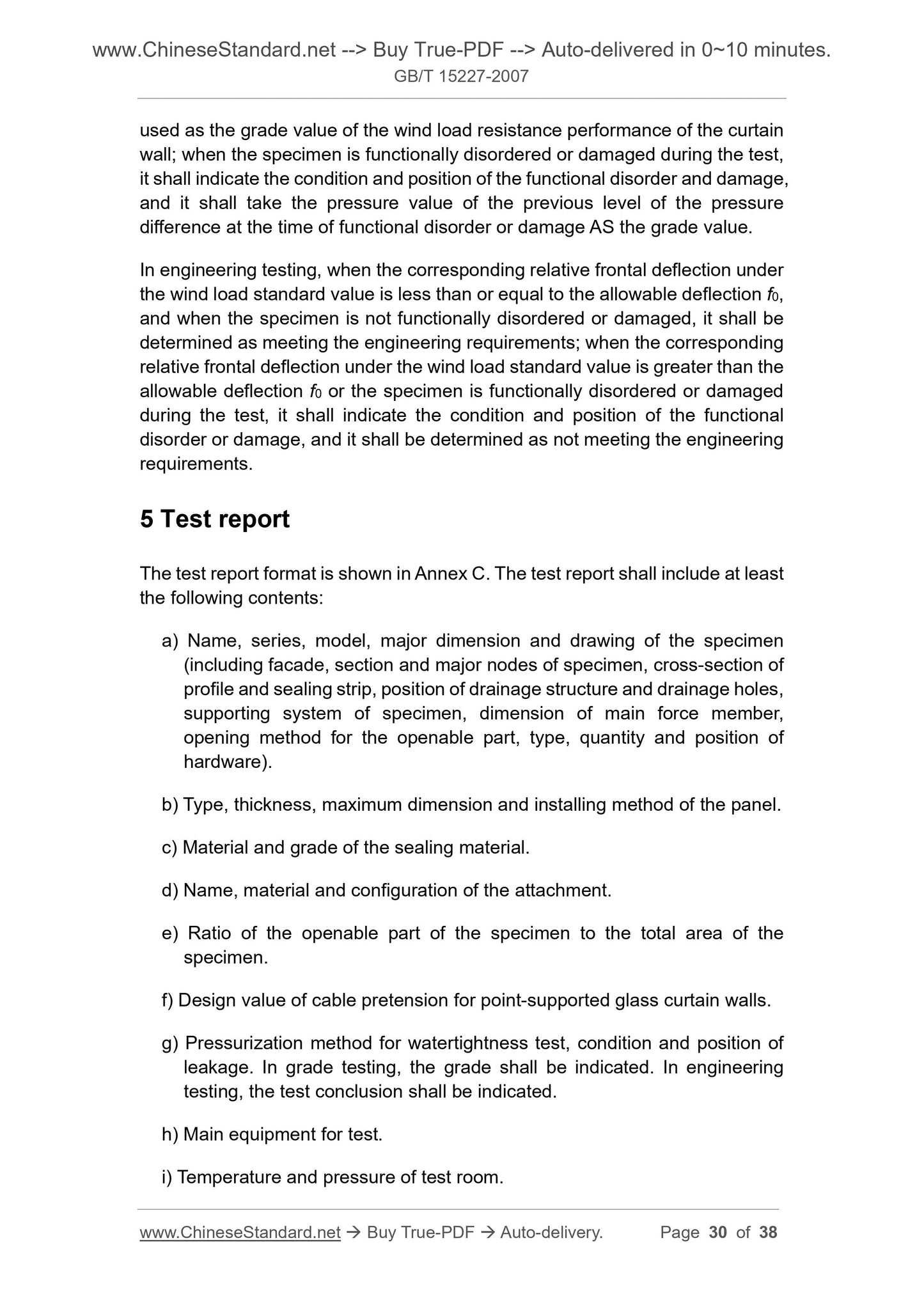1
/
of
11
PayPal, credit cards. Download editable-PDF and invoice in 1 second!
GB/T 15227-2007 English PDF (GB/T15227-2007)
GB/T 15227-2007 English PDF (GB/T15227-2007)
Regular price
$300.00
Regular price
Sale price
$300.00
Unit price
/
per
Shipping calculated at checkout.
Couldn't load pickup availability
GB/T 15227-2007: Test method of air permeability, water tightness, wind load resistance performance for curtain walls
Delivery: 9 seconds. Download (and Email) true-PDF + Invoice.Get Quotation: Click GB/T 15227-2007 (Self-service in 1-minute)
Newer / historical versions: GB/T 15227-2007
Preview True-PDF
Scope
This Standard specifies the terms and definitions, test and test reports for thetest method of air permeability, watertightness and wind load resistance
performance of curtain walls.
This Standard applies to the test of air permeability, watertightness and wind
load resistance performance of curtain walls. The test object is limited to the
curtain wall specimen itself and does not involve the joints between the curtain
wall and other structures.
Basic Data
| Standard ID | GB/T 15227-2007 (GB/T15227-2007) |
| Description (Translated English) | Test method of air permeability, water tightness, wind load resistance performance for curtain walls |
| Sector / Industry | National Standard (Recommended) |
| Classification of Chinese Standard | P32 |
| Classification of International Standard | 91.060.10 |
| Word Count Estimation | 23,230 |
| Date of Issue | 2007-09-11 |
| Date of Implementation | 2008-02-01 |
| Older Standard (superseded by this standard) | GB/T 15226-1994; GB/T 15227-1994; GB/T 15228-1994 |
| Quoted Standard | GB/T 21086; GB 50178 |
| Regulation (derived from) | National Standard Approval Announcement 2007 No.10 (Total No.110) |
| Issuing agency(ies) | General Administration of Quality Supervision, Inspection and Quarantine of the People's Republic of China, Standardization Administration of the People's Republic of China |
| Summary | This standard specifies the building walls airtight, terms and definitions watertight and wind pressure resistance detection methods, testing and inspection reports. This standard applies to building walls airtight, watertight and wind pressure performance test. Curtain only be detected specimen itself, does not involve the joint portion between the wall and other structures. |
Share
